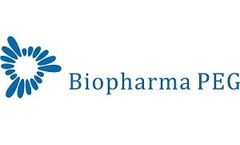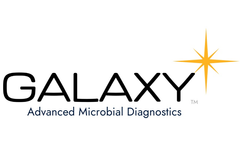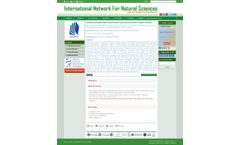Refine by
Malaria Articles & Analysis: Older
30 articles found
Quinine, an alkaloid found in the bark of the cinchona tree (Cinchona officinalis), has historically been used in the treatment of malaria. Additionally, artemisinin, derived from the sweet wormwood plant (Artemisia annua), has gained attention for its potent antimalarial properties. ...
Additionally, alkaloids like cocaine have been used as local anesthetics for surgical procedures. l Antimalarial effect Alkaloids have emerged as promising candidates in the fight against malaria, displaying potent antimalarial effects. Artemisinin, an alkaloid extracted from Artemisia annua, revolutionized malaria treatment. Its remarkable efficacy against ...
One mRNA vaccine (MRNA-1345) also showed >80% protection in Phase III trials and has been granted a breakthrough therapy by the FDA. Non-viral pathogens such as malaria (57 species) and pneumococcus (40 species) also represent an important area. Conjugate vaccines are the main focus of pneumococcal vaccines, while recombinant proteins and viral vectors are the main platforms ...
Global eradication campaigns are underway to soon end dracunculiasis (Guinea worm disease), yaws, malaria, and poliomyelitis (polio). For the latter, a milestone has been achieved in August 2020, when Africa was declared free of wild polio by the Africa Regional Certification Commission, making Afghanistan and Pakistan the last remaining countries with endemic cases. ...
In medicinal research, thiazoles and their derivatives have a variety of biological and pharmacological activities, such as antibacterial, anti-malaria, anti-cancer, anti-schizophrenia, anti-hypertension, anti-inflammatory, and anti-HIV. ...
Each year malaria kills hundreds of thousands of people – mostly children – around the globe, and according to a report by the WHO, in 2021 nearly half of the world’s population was at risk of malaria. ...
Scientists in the 1600s noted quinine’s effect against malaria. Malaria is a vector-borne disease caused by four parasites: Plasmodium falciparum, P. vivax, P. ovale, and P. malariae. ...
Ocean Biomedical is currently developing five promising discoveries that have the potential to achieve life-changing outcomes in lung cancer, brain cancer, pulmonary fibrosis, and the prevention and treatment of malaria. The Ocean Biomedical team is working on solving some of the world’s toughest problems, for the people who need it most. ...
Compare that to studies showing that insecticide-coated bed nets reduce malaria cases by 41 to 56 percent. As fearsome a disease as malaria is, it’s long been hypothesized that some children are naturally immune. ...
Artemisinin Artemisinin is a widely used drug in the standard treatment of malaria. It is extracted from the plant Artemisia annua, sweet wormwood, but can also be produced in a semi-synthetic fashion. ...
Quinine Quinine is a drug used to treat a variety of conditions, most notably malaria. It is listed as one of the WHO’s (World Health Organization’s) “Essential Medicines”. ...
The COVID-19 pandemic has placed health and wellbeing at the forefront of the global agenda, revealing an urgent need to strengthen healthcare systems and build capacity and preparedness for health emergencies as well as routine care. The pandemic has also underlined inequalities, raising significant questions around access to healthcare and healthy lifestyles for the most vulnerable in our ...
Multiplex real-time PCR: A guide to application In multiplex real-time PCR (qPCR), scientists amplify two or more target genes in the same reaction, using the same reagent mix. Multiplexing allows scientists to overcome limitations for myriad applications. First and foremost, multiplexing enables scientists to conserve valuable samples used in a quantitative assay, which is especially ...
The SOLIDARITY trial will seek to repurpose currently available drugs, evaluating the experimental antiviral remdesivir, the malaria drugs chloroquine and hydroxychloroquine, a combination of the HIV drugs lopinavir and ritonavir, and lopinavir—ritonavir plus interferon beta. ...
Malaria. Yellow Fever. Zika. Dengue. West Nile virus. These are some of the diseases, carried by mosquitos, that infect millions of people worldwide every year. ...
Among the listed medicinal plants, the greatest number (81 species) are prescribed in the treatment of diabetes, 80 species in the treatment of malaria, 56 species in the treatment of diarrhea. The Eremomastax speciosa, Justicia secunda, Annona muricata, Zingiber officinale, Kalanchoe coccinea, Vernonia amygdalina and Ageratum conyzoïdes species had 100% fidelity indices in ...
Chloroquine (diphosphate) is an antimalarial and anti-inflammatory drug widely used to treat malaria and rheumatoid arthritis. Chloroquine is an inhibitor of autophagy and toll-like receptors (TLRs). ...
Already, scientists are using CRISPR to breed mosquitos that cannot transmit malaria, an application that would save thousands of lives. Others are working to create a stronger rice plant that can withstand floods and drought caused by climate change. ...
The principal programme to date is the Millennium Development Goals of which one of the goals is to combat HIV/Aids, Malaria and other diseases since 26 million Sub-Saharan citizens have HIV. ...
The WHO report presents the latest data and in-depth analysis for the key areas outlined in the health SDGs: reproductive, maternal, newborn, child and adolescent health; infectious diseases including HIV, tuberculosis, malaria, hepatitis and neglected tropical diseases; noncommunicable diseases (NCDs) including heart disease, cancer and diabetes; mental health and ...
















